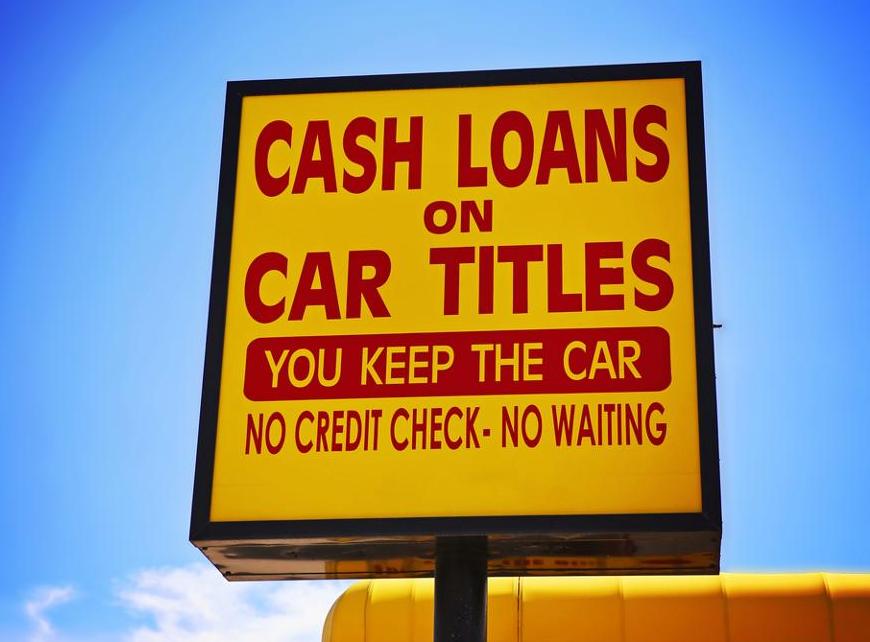Few things cause consumers more anxiety than buying a new or used car. Besides your house, it’s probably one of the most expensive purchases in your life right now.

Vehicles are just getting more and more costly in the US. In 2023, the average sales price of a new car rose to over $48,000. Used car prices saw a similar uptick, jumping up to just over $27,000.
As car prices continue to climb, it’s more important than ever for car buyers to arm themselves with smart negotiation tactics before purchasing a new car. Whether you intend to pay cash or finance your vehicle, there are several ways to prepare yourself for the dealership.
4 Costly Car Sales Tricks
We’ve uncovered four common, yet alarmingly effective, pressure tactics used by car salesmen to seal the deal and jack up the price as much as possible.
Don’t let yourself be taken advantage of when buying a new car. Find out what you can expect from car salespeople and how you can deflect their tactics to get a fair deal.
1. Emotional Hijacking
Car salespeople use this tactic in numerous ways, and it all begins in the showroom. When you’re ready to test drive a car, the dealer’s top priority is to make you want it.
They do this by helping you get comfortable. They may adjust all the settings for you, and help you imagine driving that car in your everyday life. You’re likely to get excited about the car because of its potential benefits: better mileage, fewer trips to the mechanic, or even just looking sharp in your new ride.
As your adrenaline pumps, you become emotionally attached to a particular vehicle. It can place you at an automatic disadvantage in negotiating the price. Why? Because you’re no longer relying solely on logic, such as what payments you can afford, or even the value of the car.
Those pesky emotions have become involved and now you’re more likely to compromise on your initial target price. Determine your outcome of the situation in advance of showing up at the dealership and hold yourself to it.
Comparisons
Another way they attempt to manipulate your emotions during the car buying process is by using comparisons to make you think you’re getting a great deal.
They might do this by simply placing a price reduction sticker on the car when, in reality, the “lower” price is the actual price. Just because there is a special offer does not automatically mean it’s the best deal.
Scarcity
A similar tactic that car dealers might use is to claim that your desired car is the last one in stock. This changes your emotions from excitement to fear and anxiety, thinking there’s a chance you might not get the exact model you want. Don’t fall for this trick.
Even if that particular location is out (although they probably aren’t), that doesn’t mean you can’t find the same car somewhere else. Remember to keep your emotions in check and don’t be afraid to leave. You can come back later if you’re worried about being pressured into a decision you’re not ready to make.
2. Price Diversions
Once you’ve indicated serious interest in a vehicle, it’s time to start talking price. This is where things can really start to get stressful.
If you intend to finance your vehicle rather than pay cash, you can expect the car dealers to try to steer your focus away from the actual price of the car. Instead, they will attempt to get you to focus on your monthly payment amount.
Selling on Payment Instead of Price
The idea is to make the sale price more digestible. You’re less likely to feel sticker shock from a monthly car payment of just a couple of hundred dollars. Plus, if you go back and forth on the numbers, the difference in payment amounts seem low compared to the actual vehicle price.
Let’s look at an example. If you’re buying a car listed at $30,000, but only want to pay $26,000, you can lose some serious cash if you move forward negotiating the monthly payment.
Here’s how: Assuming a 60-month loan and 3.25% interest rate, the true cost of a $26,000 loan is actually $28,205 and your payment would be $470.
The car salesperson might say he can come down from a $542 payment at the $30,000 price point to a $506 payment. That’s just $36 more each month than your target price. But the cost of making that deal is quite pricey.
A $28,000 car loan at those terms actually costs $30,374 which is a full $2,169 more than the true cost of your target price. That’s a lot of money, but it doesn’t seem like much when the car salesman negotiates just the monthly payment.
Of course, we haven’t even talked about your interest rate yet. A car salesman may not even mention the interest rate when offering different monthly payment options. You should ask for transparency around this loan term, and recognize that you can negotiate.
Shop Around First
It may help to shop around for car loans before heading to the dealership so that you can have leverage when considering in-house financing.
Check with banks, credit unions, or even online alternative lenders to see what kind of rates you qualify for. Then use this information to make sure the car dealership’s loan terms are in line with other lenders.
Another important point to note here is that your loan term can also be negotiated. Getting a lower interest rate might not make much sense if your repayment term is much longer.
Make sure you understand each of the individual variables that go into the total cost of your vehicle, not just the final sale price.
3. Pricey Add-ons
Even after you’ve finalized the price of the vehicle, there are still several pitfalls to watch out for at the car dealership. Either the car salesperson or the finance manager may try to convince you to tack on numerous products.
Two of the most popular are gap insurance and extended warranties. Cars typically lose as much as 30% of their value in the first year after purchasing. So, your loan amount and the value of your car are two entirely different numbers.
Gap Insurance
This is especially true if you put little to no money down on your vehicle. Gap insurance helps to protect individuals in the case of a total loss of the vehicle, like a major accident or theft.
Your car insurance company only compensates you for the value of your vehicle, not the loan amount. So, even if your original purchase price was $26,000, and you have $22,000 left on the loan, the car is likely only worth $18,200 by the end of the year. Gap insurance pays that $3,800 difference you still owe on the car loan.
The concept of gap insurance isn’t all bad. In fact, it can be helpful to many people who don’t have the money to pay much, or any, down payment. The problem comes in when purchasing gap insurance directly from the dealer.
Rolling It Into Your Car Payment
They might try to convince you to purchase it from them so they can easily roll it into your car payment. However, they will likely charge you more than if you went through your standard insurance company.
Some reports indicate that car dealerships charge as much as four times as much as traditional insurance companies, simply pocketing the difference for profit.
Shop around before making a decision. If the salesman tries to pressure you or bully you into choosing right then, simply decline. If they continue, find the sales manager and ask for a different salesperson, or simply just leave.
Know that there are plenty of other places where you can find gap insurance, and probably at much better rates.
Extended Warranties
Similarly, your car salesman will undoubtedly attempt to sell you an extended warranty along with your vehicle. Also known as a vehicle service contract, this agreement allows you to pay extra upfront for coverage of certain vehicle repairs.
Your salesman can tell you exactly which warranty your vehicle will qualify for so you can determine if it’s right for you. However, it’s worth noting that the average cost of an extended car warranty is around $3,000, yet 55% of consumers don’t use their coverage at all.
Before you decide if a warranty is right for you, research specific plans and gauge your appetite for risk. Otherwise, you might get flustered listening to horror stories at your car dealership and end up spending an extra grand on a service you hadn’t intended to buy.
4. The “Trade-In Trick”
This is a technique often used by car salesmen to entice customers into buying a car. The salesperson will offer a customer a low price on a car if they trade in their old car. This low price may seem appealing, but it does not always work out in the customer’s favor.
The dealer will often overvalue the customer’s trade-in vehicle. Then, make the overall price of the car they want to buy higher than it would be without the trade-in. The dealer will then pocket the difference between the trade-in’s fair market value and the amount they offered the customer.
This technique is often used to pressure customers into buying cars they may not be able to afford. To avoid falling for this trick, car buyers should always research the fair market value of their trade-in vehicle before agreeing to any deals.
Car Salesman Tricks FAQ
What are some common car salesman tricks?
Some common car salesman tricks include high-pressure sales tactics, withholding information, making false promises, and offering unreasonable financing terms.
How do I avoid being taken advantage of by a car salesman?
To avoid being taken advantage of by a car salesman, you should do your research and know what you want before you enter the dealership. Additionally, be aware of common car salesman tricks and don’t be afraid to walk away if you don’t feel comfortable.
How do I negotiate a better price for a car?
To negotiate a better price for a car, you should research the car’s market value. Be ready to walk away if the dealership won’t budge on the price. Additionally, you should always be aware of hidden fees. Be sure to ask for any discounts or promotions the dealership may be offering.
Bottom Line
Now that you know what tactics to expect from salespeople before you go car shopping, you’re in a much better position to negotiate effectively. Remember to research comps before you go in and determine your highest offer ahead of time.
Decide what types of additional products you’re interested in, and shop other competitors. And finally, don’t forget to consider all the loan terms associated with financing your next car purchase. Taking each of these steps may seem time-consuming. However, you’ll likely save yourself hundreds, if not thousands of dollars in the process.




